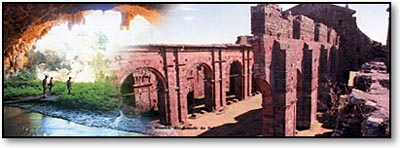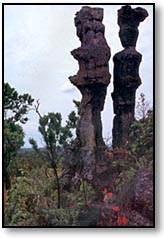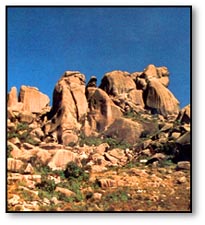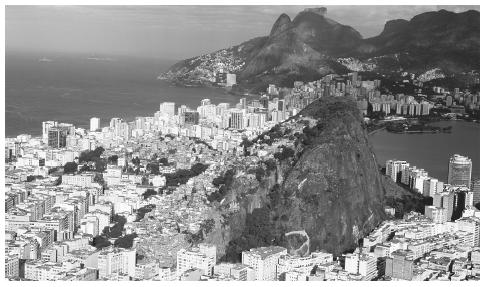 | ||
| BRAZIL History |



Brazil Culture and Information. New World in the Tropics.
Brazil has been shaped not only by the Portuguese, who gave the country its most common religion and language, but also by the country's native Indians, the considerable African population, and other settlers from all over the world.
Amazon River and Rainforest
The Amazon is the largest rainforest on the planet and the river (together with tributaries) create nearly 80 000km² of navigable river systems covering at least half of Brazil. Large areas of the Amazon rainforest still remain unexplored, however, and tens of thousands of rare and unknown species of animals, birds, insects, fish and plants are sheltered in and beneath the thick tree canopies.
Brazil Culture and Information: It is said that one in 10 known species of living plants, animals and insects can be found in the Amazon, while a square kilometre may contain over 75 000 types of trees and 150 000 species of higher plants. It is truly the Earth’s “lung”.
With the country's enormous size, growing population and economy, and exuberant culture, Brazil is now solidly established as a regional power. Facts and myths of Brazil are often intermixed in the mind of the visitor.
Brazil Population: In 2002 Brazil's population reached 175 million, (today it is estimated at 185 million) the sixth largest in the world after those of China, India, the United States, Indonesia and the Russian Federation.
The population is predominantly young: 62% of Brazilians are under 29 years of age.
Brazil's rate of population growth, high throughout the early and mid-20th century, has decreased significantly since 1970, largely due to economic modernisation and also a dramatic urbanisation process.
(In 1980, 67% of the population lived in cities; by 2000 the figure was more than 81%.)
The annual rate of population growth fell from 2.9% in the 1960s to less than 1.9% in the 1990s. Behind these figures was a fall in the fertility rate from 6.3 children per woman in the early 1960s to 4.4 in the 1980s.
Although Brazil is the sixth most populous nation in the world, its average population density is low compared to that of other countries.
Most people live along the Atlantic coastal areas of the southeastern and northeastern states.
Industrial activity is concentrated in the southeastern region, with 50 percent of industrial production located in the state of Sao Paulo.
Migration from the northeast to the southeast, as well as from rural to urban areas, has been very significant since 1970.
More recently, the population flow has turned towards the less inhabited central-western and northern regions.
Brazilian Foods
Brazilians like their food and any meal is as much a form of relaxation and entertainment as going to the cinema, relaxing on the beach or playing a game of tennis. In Brazil, a meal is to be enjoyed and savored and is very much a social occasion. It calls for Brazilian music to go with it!
Brazilian Foods


“Brazil is kaleidoscopic. -- The country's modern cooking is a mixture of Portuguese, African and primitive Indian influences, and it is both unique and quite good.”
Brazilian Foods - Distinct Cuisines
The best-known regional cuisine comes from Bahia and is the spiciest in the land. Bahian cuisine reflects not only its tropical setting but also the African, European and other cultures that have made the region their home since 1500. The entire northeast has its own regional dishes, as does the Amazon region, which makes good use of the abundance of river fish, most of which are unknown to European and North American tables.
Brazil boasts 17 World Heritage Sites
- 1980 Historic Town of Ouro Preto
- 1982 Historic Center of the Town of Olinda
- 1984 The Ruins of São Miguel das Missões
- 1985 Historic Center of Salvador de Bahia
- 1985 Sanctuary of Bom Jesus do Congonhas
- 1986 Iguaçu National Park
- 1987 Brasilia
- 1991 Serra da Capivara National Park
- 1997 Historic Center of São Luís
- 1999 Historic Center of the Town of Diamantina
- 1999 Discovery Coast Atlantic Forest Reserves
- 1999 Atlantic Forest Southeast Reserves
- 2000 Pantanal Conservation Area
- 2000 Jaú National Park
- 2001 Chapada dos Veadeiros and Emas National Park
- 2001 Brazilian Atlantic Islands
- 2001 Historic Center of the Town of Goiás
The Amazon River or River Amazon of South America is the largest river in the world by volume, with greater total river flow than the next eight largest rivers combined, and the largest drainage basin in the world.
Because of its vast dimensions it is sometimes called The River Sea. Most sources regard the Amazon as the second longest river; while some sources disagree.
Facts of Brazil
The Amazon has been measured by different geographers as being anywhere from 3,889 miles to 4,171 miles long. The Nile River in Africa is reported to be anywhere from at 3,417 miles to 4,157 miles.
The area covered by the water of the River and its tributaries more than triples over the course of a year. In an average dry season 42,000 square miles of land are water-covered, while in the wet season the flooded area of the Amazon Basin rises to 135,000 square miles.
Facts of Brazil - Fresh Water
The quantity of fresh water released by the Amazon to the Atlantic Ocean is enormous: up to 300,000 m³ per second in the rainy season. The Amazon is responsible for a fifth of the total volume of fresh water entering the oceans worldwide. Offshore of the mouth of the Amazon, potable water can be drawn from the ocean while still out of sight of the coastline, and the salinity of the ocean is notably lower a hundred miles out to sea.
Swimmer conquers Amazon River
The Amazon estuary is over 202 miles wide. The main river (which is between approximately one and six miles wide) is navigable for large ocean steamers to Manaus, 930 miles upriver from the mouth. Smaller ocean vessels of 3,000 tons and 18 ft draft can reach as far as Iquitos, Peru, 2,240 miles from the sea. Smaller riverboats can reach 485 miles higher as far as Achual Point. Beyond that, small boats frequently ascend to the Pongo de Manseriche, just above Achual Point.

The Amazon drains an area of 2,670,000 square miles, or 40 percent of South America. It gathers its waters from 5 degrees north latitude to 20 degrees south latitude. Its most remote sources are found on the inter-Andean plateau, just a short distance from the Pacific Ocean.
The Amazon has changed its course several times. In early Cenozoic times, before the uplifting of the Andes, it flowed westward.
Relationships & Communication

Business Negotiation
Business Meeting Etiquette

No comments:
Post a Comment